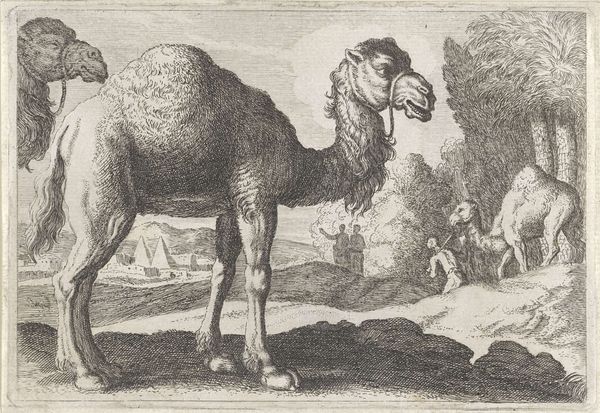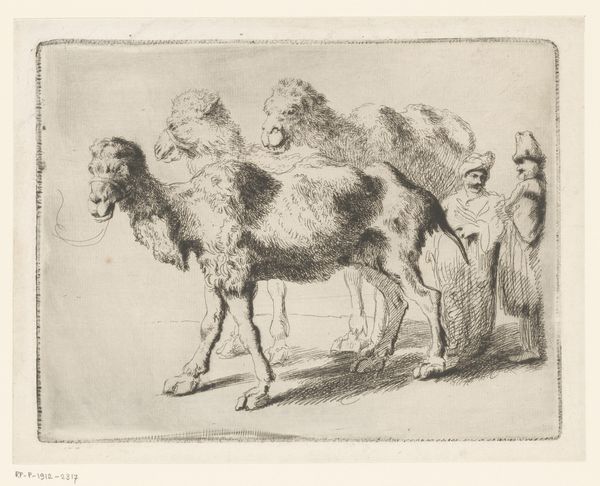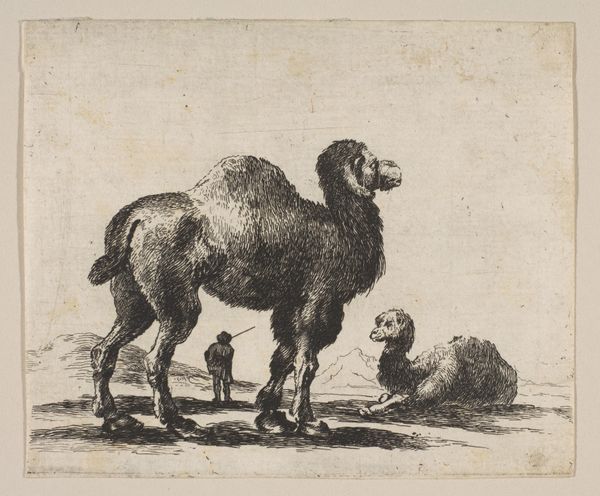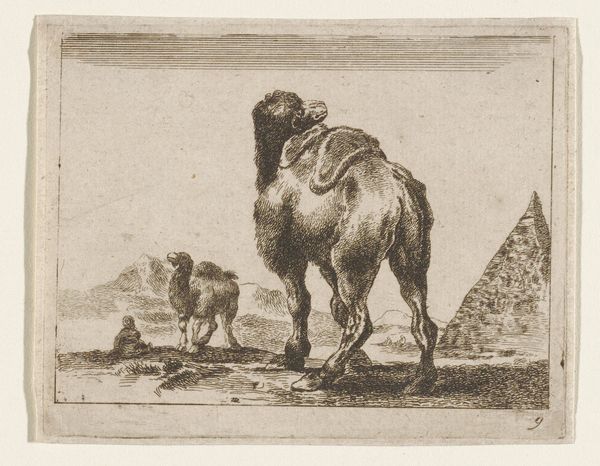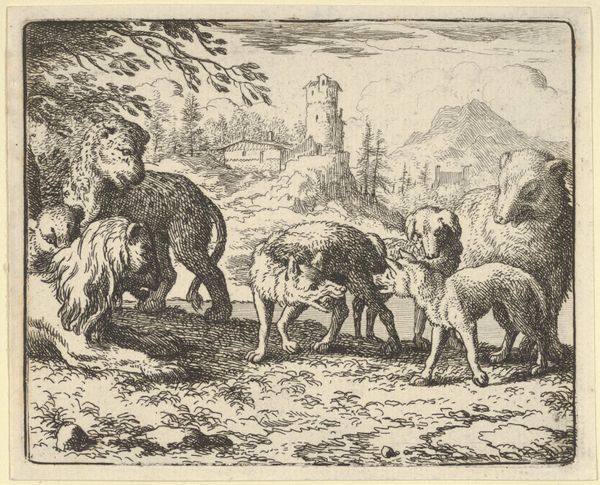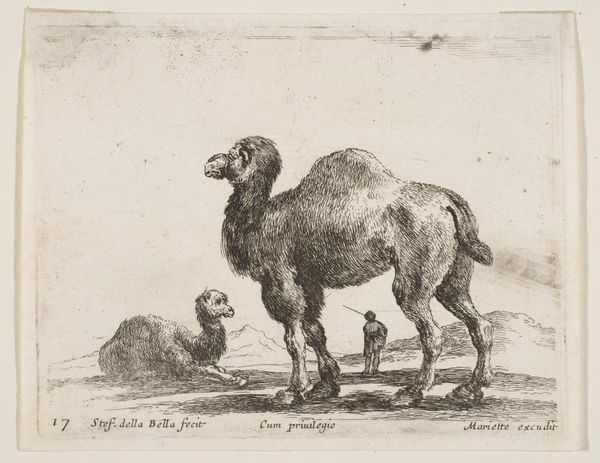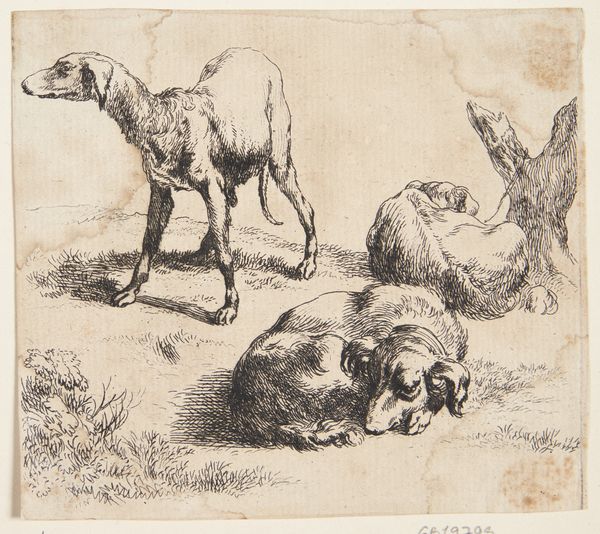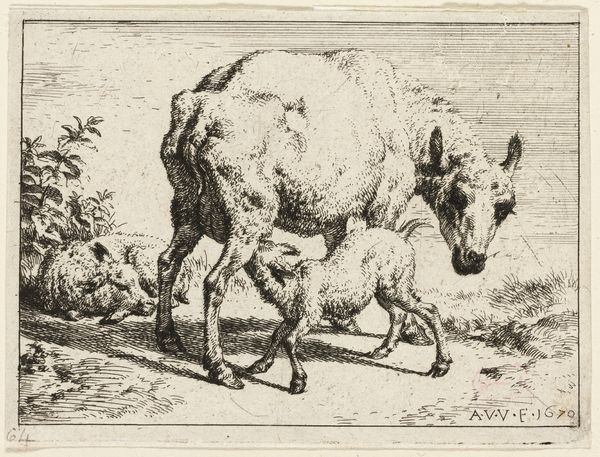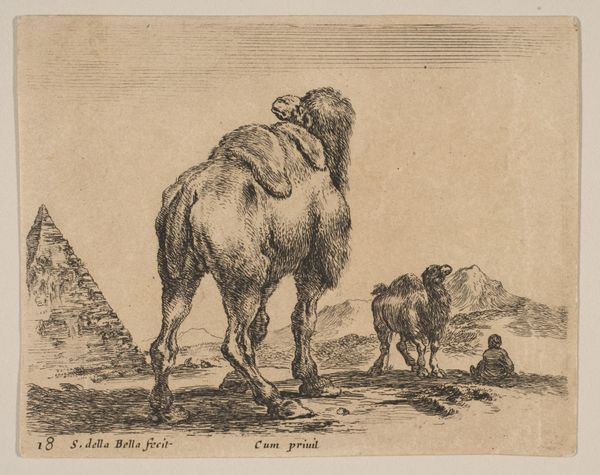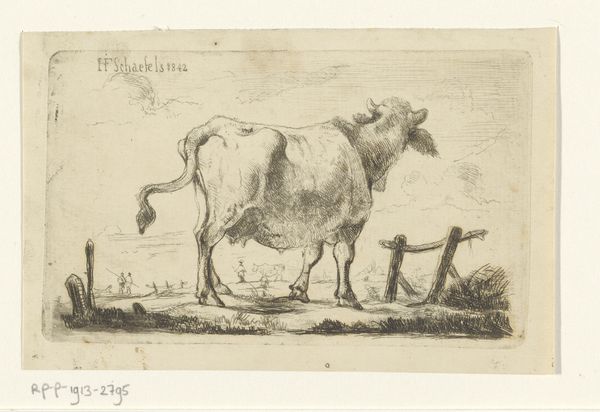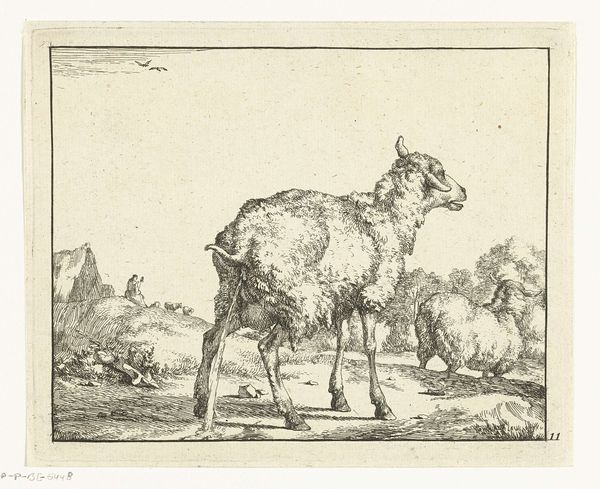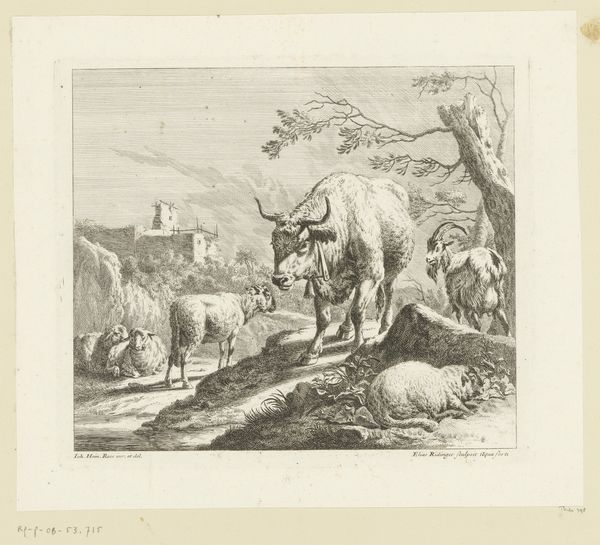
print, etching
#
baroque
# print
#
etching
#
landscape
Copyright: National Gallery of Art: CC0 1.0
Editor: This etching is called "Camels" by Herman van Swanevelt, and it's pretty amazing how much detail he got using just lines. It almost feels like two separate scenes—the close-up camel looks very different than the ones in the distance with the figures. What draws your eye when you look at it? Curator: The camel in the foreground immediately commands attention, doesn't it? Think about what the camel symbolizes - resilience, endurance, travel across harsh landscapes. Then note its depiction amidst implied pyramids in the background. It speaks to an enduring symbolic connection, almost like a cultural memory being carried forth across generations, etched—literally—into the image. What do you make of that stark contrast between foreground and background? Editor: Maybe the pyramids represent permanence and ancient civilizations, while the camels embody continuous journeys and change. I never would've made that connection if you hadn't mentioned it. Curator: Indeed! And consider how the artist chooses to depict them. The foreground camel is so textured and immediate, whilst the distant shapes seem dreamlike, hinting at both presence and transience. Could the people there, with their camels, reflect a continuity, a living link, traversing history, perhaps even echoing biblical imagery? Editor: It’s like layers of time compressed into one image. Seeing them as symbols opens a whole new perspective. I guess I always just thought it was a picture of camels. Curator: Exactly. And how Swanevelt uses line and perspective works with the image—making it speak across centuries. Each element – animal, landscape, historical allusion – blends in a cultural script. Editor: I love how one image can hold so many narratives, it’s incredible!
Comments
No comments
Be the first to comment and join the conversation on the ultimate creative platform.
